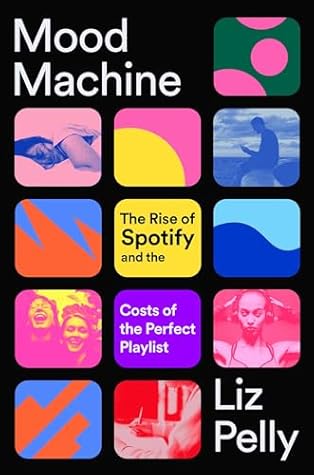More on this book
Community
Kindle Notes & Highlights
by
Liz Pelly
Read between
March 21 - April 5, 2025
It should give readers pause that “a huge conspiracy” was one of the first phrases used to describe music streaming in the mainstream news media.
For some, there was still a sense that maybe the internet would live up to its potential as a liberating force for culture. But more importantly, this was a time when the independent music world still had its own thriving media ecosystem, before so much of the music press was swallowed by the shifting digital ad landscape and streaming services. In 2009, there were more alt-weekly newspapers in the U.S. than ever before—135 of them—and these papers tended to cover local music in a way that to date has never really been replaced.
Cornils points to Jacques Attali’s idea in Noise: The Political Economy of Music that “the music industry is not devoted to the production of supply, but rather to the production of demand itself.” Playlists don’t just respond to users’ musical interests, but manufacture them, too.12
It follows that a population paying so little conscious attention to music would also believe it deserving of so little financial remuneration.
They’re not providing music. They’re filling people’s time. And he said at a company meeting, I remember he was like, ‘Apple Music, Amazon, these aren’t our competitors. Our only competitor is silence.’ ”
Muzak was not actually controlling the minds of the masses through music, but its aspirations and successes illuminate the ways people in power have long bought into simply the very idea of mood manipulation.
If the Muzak of the 1940s was about disciplining workers in factories—or selling to employers the idea that this was possible—then today’s mood music boom, in the age of being your own boss, might be more about the streaming user disciplining themselves, or being sold on that possibility, under the guise of self-improvement and empowerment, like an integral part of any self-care routine.
Another source told me that no one internally could agree on what “chill” meant—that it was so ambiguous, it had “no definition that is meaningful.”
Pesky protests for higher royalty rates aren’t an issue when your playlists are filled with artists who don’t exist.
The music journalist David Turner once wrote in his newsletter Penny Fractions that Eilish’s story was “one of an industry desperate to make a broken model appear well-functioning.” In general, industry actors have made a point to champion artists who represent the ability to blow up via streaming; it makes the system look effective.
Hyperpop was a web scene—it’s not like there was no digital or data footprint for these artists—but for Spotify, it wasn’t considered real enough until the data was on Spotify. It’s an equation that brings to mind what the author and academic researcher Maria Eriksson wrote in a 2016 paper on the Echo Nest, building on the work of Geoffrey C. Bowker: “We seem to be entering a point in time in which you do not exist unless you are data.”
The walls were green, the floor was green, the ceiling was green. The entire venue was consumed by neon green. Is this really what it’s come to? I thought to myself.
some mid-tier rap and pop playlists, including one called “goosebumps” (tagline: “you up?”)
The kids I spoke to outside Market seemed genuinely enthused. But as I headed home, I was struck by how palpably it seemed that most of those conversations were more concerned with a niche vibe fandom—which no one could even really explain—than the artists themselves.
“If somebody is engaging in the catalog because it gives them a vibe, but then they don’t understand that the track has a cultural function within a community and a society, that is disrespectful, to engage with it as though it’s just sound, it’s just vibes,” she continued. “Maybe it’s ceremonial, maybe it’s something of an important community tradition, and we’re just removing all of that context from it because we just like the way it sounds.”
“When you subjugate something and call it content, that means it’s contained. I don’t want art to be contained. I want it to be free and to run around and be weird and messy.”
When I spoke to three different big indie label managers whose artists had landed on Spotify billboards in the past, they largely agreed that the value was more about having a photo of the band in front of the billboard than the actual billboard itself.
Rethinking the future of music also requires rethinking profit motives and power structures, and challenging a system where a small handful of entertainment and technology firms own so much of music. It requires investigating alternative models that are more cooperative, transparent, and artist-run, that support artists operating across diverse scales and practices, and that generally put people over profit.
Dozens of public libraries have launched community-driven local music streaming collections over the past decade: Seattle, Austin, Pittsburgh, Minneapolis, Eau Claire, Chapel Hill, Edmonton, Salt Lake City, and Denver among them. Library streaming raises a particularly radical idea: What if people participating in a local music scene could also be involved in helping to shape the digital tools people use in their everyday lives?


